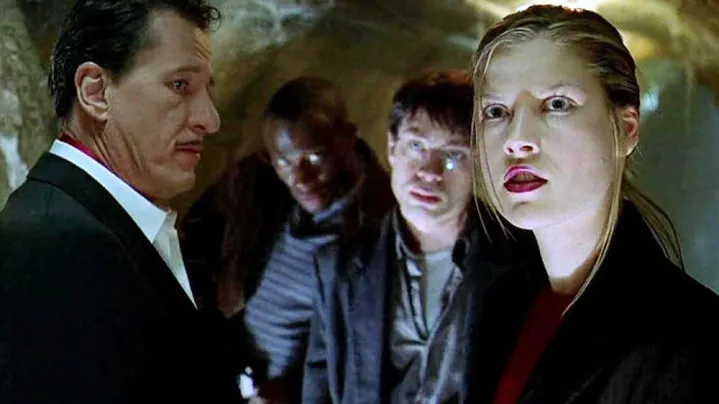Twenty-five years ago today, director William Malone’s House on Haunted Hill premiered in theaters. Based on director William Castle’s 1959 film of the same name, this horror movie follows an eccentric millionaire who invites a group of people to an abandoned psychiatric hospital and offers $1 million to anyone who can stay in the allegedly haunted institution for a whole night.
Though this remake had the support of acclaimed producer Robert Zemeckis (Back to the Future), it was still panned by critics upon release. Nevertheless, Malone’s film premiered at the top of the box office and made $43 million against its $19 budget. Remakes rarely live up to fans’ high expectations, but here’s how 1999’s House on Haunted Hill actually compares to the original movie.
Same story, different execution (no pun intended)

The core concept of both stories is essentially the same, with the key difference being the nature of the haunted house itself. The remake portrays the house as a haunted psychiatric hospital where doctors used to subject their patients to horrible experiments in a manner inspired by the Nazis. The house is also inhabited by an evil entity known only as “The Darkness,” which is the culmination of all the spirits that reside in the house. Though the house in the original film is the site of a few murders, it isn’t haunted at all. The “supernatural” occurrences that occur in the film are revealed to be staged as part of an elaborate murder plan straight out of an Agatha Christie mystery novel.
The lack of an actual haunted house in the original film makes its story a clever psychological horror story about the destructive effects of lust, greed, and paranoia. While the remake retains the fake murder twist, it still goes against that by showing the house is actually haunted in the end, resulting in a cliché ghost story that fails to modernize the source material. Coincidentally, this film fails to reinvent the story in the same way as The Haunting, the remake of a similar horror classic released that same year.
Cast is stacked, but their characters are underwhelming

House on Haunted Hill features a cavalcade of ’90s stars like Geoffrey Rush (Pirates of the Caribbean), Famke Janssen (X-Men), Taye Diggs (How Stella Got Her Groove Back), Ali Larter (Final Destination), Chris Kattan (Saturday Night Live), Peter Gallagher (Grace & Frankie), andJeffrey Combs (Justice League Unlimited). Despite such a talented cast, they give such dry portrayals of their loathsome, one-dimensional characters and are saddled with unrealistic dialogue that it’s no surprise that they fail to hook the film’s audience. However, it’s only fair to mention that some footage about Larter’s protagonist losing her job was removed from the theatrical cut.

In contrast, horror icon Vincent Price leads the cast of the original movie with a performance oozing with his famously fiendish charisma. Though not every character in the source film is supposed to be likable, each actor portrays them with their own brand of campy, classical charm that makes them fun to watch. The film also introduces each of them very well, establishing their specific reasons for wanting the money promised by their mysterious host. The remake may have the guests be descendants of the house’s original staff, making them targets of the Darkness, but that barely adds anything of genuine interest to their characters or their arcs.
Classic scares vs. heavy metal horror
The original House on Haunted Hill builds tension and suspense to the point that it achieves some terrific jump scares. Despite how cheap the film may look today, it more than makes up for it and its lack of R-rated gore by unnerving and shocking its audience the moment it begins.
Meanwhile, the remake presents what is essentially “heavy metal” horror, bombarding audiences with violent, gory images of evil ghost doctors and dead hospital patients. It’s the kind of thing audiences would see walking through a haunted hospital theme park ride. It also doesn’t help that the film features unconvincing ’90s visual effects when presenting the eldritch Darkness, which undermined its clever design that is reminiscent of a Rorschach test.
All in all, 1999’s House on Haunted Hill feels more like an amusement park ride than an actual film. Its thin narrative and flat, unappealing characters fail to get audiences invested in what happens in the story. Even the film’s talented cast couldn’t save it with the material they were given. It tries to do something new by adding a supernatural element surrounding the house’s former patients. Not only does it dilute the themes that made the original so distinctive, but it also goes against its good intentions with its sensationalized and dehumanizing portrayal of people with mental health issues.
The 1959 version of House on Haunted Hill is streaming on Tubi. Beware: it’s the colorized version. The 1999 version is also streaming on Tubi.

